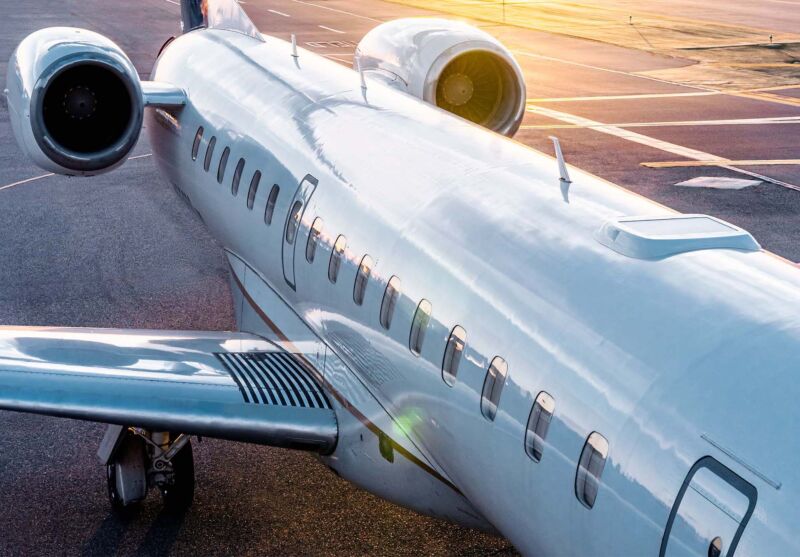
reader comments
213 with 93 posters participating

SpaceX is now advertising Starlink Aviation, promising 350Mbps broadband with unlimited data for each airplane it’s installed in.
“Starlink can deliver up to 350Mbps to each plane, enabling all passengers to access streaming-capable Internet at the same time,” the company said. “With latency as low as 20 ms, passengers can engage in activities previously not functional in flight, including video calls, online gaming, virtual private networks and other high data rate activities.”
Starlink said the airplane service will use a “low-profile Aero Terminal” with “an electronically steered phased array antenna, which enables new levels of reliability, redundancy and performance.” It has a “simplified design” that “enables installations during minimal downtime and combines well with other routine maintenance checks,” Starlink says. The service hardware also includes two wireless access points.
There’s a one-time hardware cost of $150,000, not including installation. “The installation can be performed by your current maintenance organization or Starlink can recommend experienced and qualified installers,” Starlink says.
Musk: It’ll be like “accessing Internet at home”
Monthly service fees are $12,500 to $25,000. There are “no long-term contracts and all plans include unlimited data. Your hardware is under warranty for as long as you subscribe to the service,” the Starlink Aviation webpage says. Buyers can reserve now and deliveries will begin in mid-2023, a Starlink FAQ says.
“Internet in airplanes will feel same as if you were accessing Internet at home,” SpaceX CEO Elon Musk tweeted.
Starlink Aviation will have global coverage as “there are always satellites overhead or nearby to provide a strong signal at high latitudes and in polar regions,” the FAQ says. “Service will be available in-flight over land and water and on the ground during taxi, takeoff, and landing. As long as the equipment is powered on and the Starlink has an unobstructed view of the sky, connection is possible.”
supplemental type certificates for the following aircraft: ERJ-135, ERJ-145, G650, G550, Falcon 2000, G450, Challenger 300, Challenger 350, Global Express, Global 5000, Global 6000, and Global 7500. Those models are business jets and regional jets, but SpaceX said that the “Starlink engineering team will update this list as development begins on additional aircraft.”
At least two airlines plan to use Starlink
Starlink recently received Federal Communications Commission approval to provide Starlink satellite Internet service on moving vehicles, ships, and airplanes. Even before getting that approval, SpaceX was negotiating with airlines to bring Starlink onto flights. In April, Hawaiian Airlines said it would offer Starlink service to passengers for no extra charge, starting next year.
Starlink Aviation could help SpaceX improve Starlink’s finances, which have taken a hit with the company donating terminals and service to the Ukraine war effort. “SpaceX is losing ~$20M/month due to unpaid service & costs related to enhanced security measures for cyberwar defense, but we’ll keep doing it (sigh),” Musk wrote on Twitter yesterday.
SpaceX also lost out on $885.51 million in FCC rural broadband funding that would have been distributed over 10 years, though it’s appealing that decision. The FCC doubted Starlink’s ability to meet the broadband grant’s speed requirements—recent speed tests show Starlink home Internet has been getting slower as more people use it.
Starlink conducted a demo last month on a JSX Air flight between Burbank and San Jose, California, reportedly hitting speeds above 100Mbps. JSX CEO Alex Wilcox said the airline will start offering Starlink service on passenger-carrying flights in October, according to an Aviation Today article published on September 9.
“JSX operates a fleet of 77 total Embraer 135s and 145s, and currently has Starlink antennas, modems, and wireless access points installed and testing on two of its aircraft,” the Aviation Today article said. “Wilcox described the performance of Starlink on those two aircraft as working ‘amazingly well.'”






